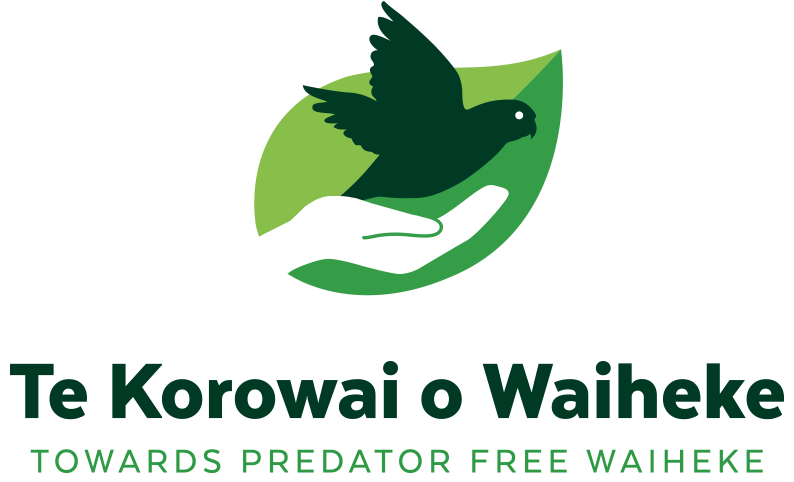A day in the life of Te Korowai o Waiheke's Stoat Field Team Technician, Tilde
A day in the life of Tilde Sorensen: Te Korowai o Waiheke’s Stoat Field Team Technician.
What does your day-to-day look like?
Our mornings start off with a team meeting, which is an opportunity for everyone to catch up and discuss any stoat sightings and captures, along with general updates on trap locations and the GIS system used to record our trapping information. Frank (Stoat Operations Manager) then tells us which trap run we will be working on for the day and we get our supplies and trapping gear ready. After that, it is a question of locating each of the traps on our run, replacing bait, and removing anything that has been caught. Some of the trap runs require long walks and lots of hills, where on others, we drive from trap to trap along road sides. I always pick a pretty spot on a beach along the way to stop for lunch. When we finish, we come back to the office and drop off our gear and left over bait ready for the next day.
How did you get into this type of work?
Tilde servicing a trap
I graduated with an MSc in conservation and biosecurity from the University of Auckland last year. Working for Te Korowai o Waiheke has been a wonderful introduction to life in a real conservation job outside the lecture hall and computer lab!
What has your previous work experience looked like?
Growing up on Waiheke, my first work experiences were mostly working in vineyards and in hospitality. I also worked on the stoat trapping pilot study that was run on Waiheke in 2016 and provided a starting point for the eradication run by Te Korowai o Waiheke, so in that respect, this job is very familiar to me.
What attracted you to working in conservation?
I am proud to be a third-generation conservationist and activist in my family. Growing up surrounded by people who care about the environment, it seemed a natural field for me to move into. I am also of the opinion that if you are going to spend 40 hours a week at a job, it might as well be something that makes a positive impact on the world and protecting our native species does that for me.
How did you get to Waiheke?
I was born here!
What’s the weirdest job you’ve had?
I think working for Te Korowai o Waiheke is the weirdest job I have had. Sometimes we need to create scent trails to our traps, which involves dragging a dead stoat on a lead behind us. There is certain ridiculousness to that which tops any other jobs I have ever had!
How long have you been working in conservation?
In some ways you could say from the time I was in a backpack carrier as a toddler while my parents planted trees and removed invasive plants. In a formal sense though, since I started studying ecology six years ago and became involved in volunteering along the way.
What’s your best work story at Te Korowai o Waiheke?
I don’t have a single best work story but my favourite one plays out almost every day. I really enjoy the interactions with our lovely Waiheke community. The conversations usually start with someone asking what you are doing walking around with a bucket and high vis vest in the rain! People are so incredibly supportive of the project when you explain it to them and we get some many people saying thank you for the work we are doing. I also enjoy hearing all about people’s own conservation efforts and the work they are doing in their own gardens, it is very uplifting!

